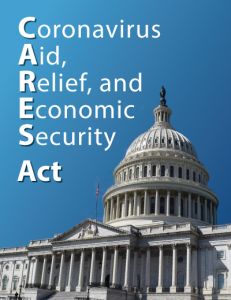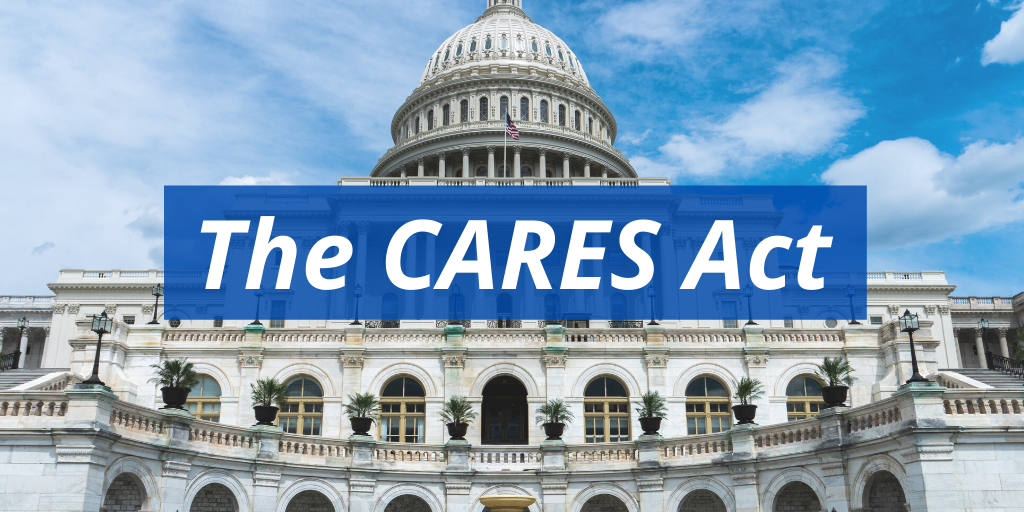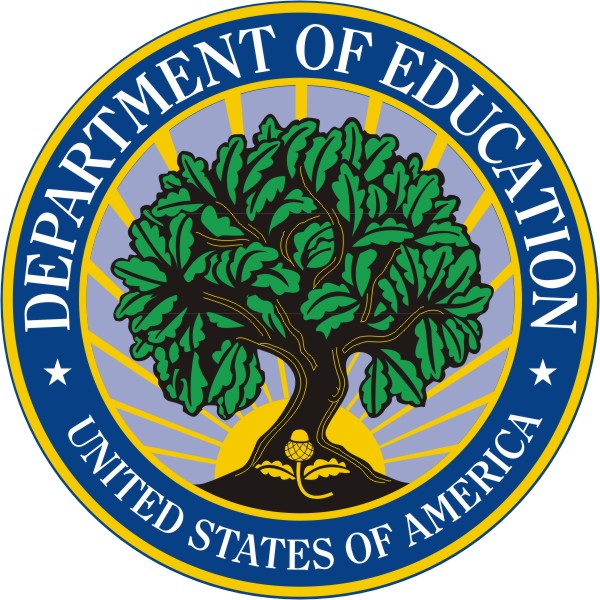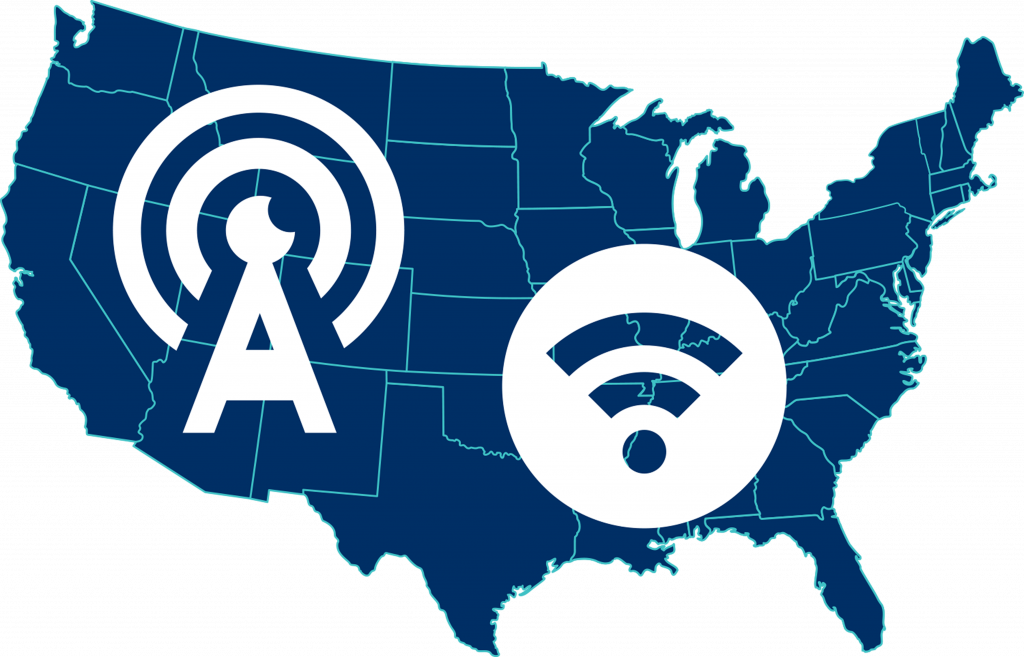Funding to Support eLearning per COVID-19
Below are examples of Federal and State funding programs to support the implementation of eLearning per the COVID-19 outbreak.

State Education Agency Considerations for CARES Act Funding as Related to Digital Learning document was developed by SETDA in collaboration with the membership to support decisions related to CARES Act Funding and digital learning.
The document is broken into the following sections;
* Executive Summary
* Background and Definitions
* SEA Comprehensive Planning
* Equitable Access to Devices & Broadband On-Campus/Off-Campus
* State Leadership for Professional Learning Opportunities
* Digital Instructional Materials
* Well-being Support
Federal Funding
 CARES Act: Education Stabilization Funding
CARES Act: Education Stabilization Funding
Elementary and Secondary School Emergency Relief Fund $13.5 billion
On April 23, the U.S. Department of Education announced the release of the CARES Act’s $13.5B K-12 emergency relief funding, promising no more than a 3-day review of state applications. USED took the opportunity to emphasize online learning. The K-12 Fund application calls on states to describe the extent to which the state will support “remote learning” using the 9.5% state share, including “developing new informational and academic resources” The application also notes that SEAs may ask school districts “the extent to which the LEA intends to use ESSER funds to promote remote learning.” bit.ly/3bB9YkU
Funding may be used for nearly any education purpose authorized by federal law, including connecting students to broadband and related professional development.States must request the funding from USED. State and local allocation based on the proportional share of ESEA Title I money for the most recent fiscal year. Funding Details: At least 90% must be allocated to school districts. States may use 1/2% for administrative costs State have flexibility for 9.5% of the funding for emergency support.
Dedicated Funds: Bureau of Indian Education: $154 million for programs operated by the Bureau of Indian Education (BIE). U.S. Territories: “No more than” $154 million for the Virgin Islands, Guam, American Samoa, and the Northern Mariana Islands, to be distributed to these areas “on the basis of their respective needs as determined by” the Secretary of Education. Puerto Rico and the District of Columbia are considered states for the purposes of distributing the fund.
Governor’s Emergency Relief Fund $3 Billion
On April 15, the Office of Elementary and Secondary education released the application for the Governor’s Emergency Education Relief Fund (GEERF). The Department will award these grants to States (governor’s offices) based on a formula stipulated in the legislation. (1) 60% on the basis of the State’s relative population of individuals aged 5 through 24. (2) 40% on the basis of the State’s relative number of children counted under section 1124(c) of the Elementary and Secondary Education Act of 1965 (ESEA). The grants permit Governors to provide additional assistance to the educational entities that are most significantly impacted by the emergency. State allocation 60% based relative population of individuals aged 5-24 and 40% based on relative number of children aged 5 to 17.
Letter to Governors: https://oese.ed.gov/files/2020/04/GEER-Fund-Cover-Letter-to-Governors.pdf
State Allocations: https://oese.ed.gov/files/2020/04/GEER-Fund-State-Allocations-Table.pdf
Notice of the Funds: https://oese.ed.gov/files/2020/04/GEER-Notice-of-Funds-1.pdf
Application: https://oese.ed.gov/files/2020/04/GEER-Certification-and-Agreement.pdf
Governor’s Emergency Education Relief Fund FAQ: USED’s FAQ GEERS Funding May 2020
Other Programs with Support for eLearning
The Institute for Museum and Library Services (IMLS) released $30 million of the $50 million of these funds for digital access and technical support services. States and territories will be able to use the funds to expand digital network access, purchase internet accessible devices, and provide technical support services to citizens to address digital inclusion efforts and related technical support, using the following types of data to prioritize efforts: Poverty/Supplemental Nutrition Assistance Program (SNAP); Broadband availability and unemployment. The state allotment tables can be viewed here; IMLS will provide additional details and anticipated timelines of this funding availability directly to State Library Administrative Agencies (SLAAs). The agency also plans to announce additional measures to aid museums and libraries, both through its current funding and that received through the CARES Act.
Rural Utilities Service (USDA) Distance Learning, Telemedicine, and Broadband Program $25 million in additional funding.
“Safe Schools and Citizenship Education” – $100 million to prevent, prepare for, and respond to coronavirus, including to assist and distance learning and associated costs via SERV grant program/
ESSA Waivers *These waivers can support additional funding to support eLearning
-
- Schoolwide Title I program designation;
- Supplement, not Supplant;
- Maintenance of Effort;
- Title IV needs assessment; 15% technology cap; 20% set asides for school safety and enrichment; and
- ESEA’s professional development definition

Potential Funding: 4th Stimulus Package (pending)
- Homework Gap Funding Request $2 Billion via the E-rate Program for Off Campus Access
- FCC Confirms – Public Use of School and Library Wi-Fi Networks Permitted The FCC confirmed that closed schools may allow access to E-Rate funded services “to community members who access the Internet while on a school’s campus” so long as they do not charge for the use of the service.
State Grant Programs
Pennsylvania’s Continuity of Education and Equity Grant (CEEG)
The Pennsylvania Department of Education (PDE) is working to remove barriers and to provide guidance so that local education agencies (LEAs) can provide continuity of education to all students. PDE has partnered with the commonwealth’s 29 Intermediate Units (IU) for the provision of technical assistance as schools develop continuity of education plans pursuant to Act 13 of 2020. Applicants may apply for one of two types of grants – a Systemic Continuity of Education Equity Grant or a Student Group Continuity of Education Equity Grant.
Texas Instructional Continuity Grants Help Texas Districts Facilitate Remote Learning
The Texas Education Agency released new funding for districts and open-enrollment charter schools with at least one federally identified Targeted Support and Improvement Title I campus through the Texas Education Agency’s Instructional Continuity Grant. The grant provides funding for supplemental resources to increase districts’ capacity to facilitate instructional continuity and distance, remote and/or virtual learning for campuses that have been closed due to COVID-19. District awards will range between $10,500 and $220,000 based on the number of identified schools.
CARES Act Funding Guidance
SETDA will be publishing guidance related to considerations for CARES Act spending to support digital learning implementation.


